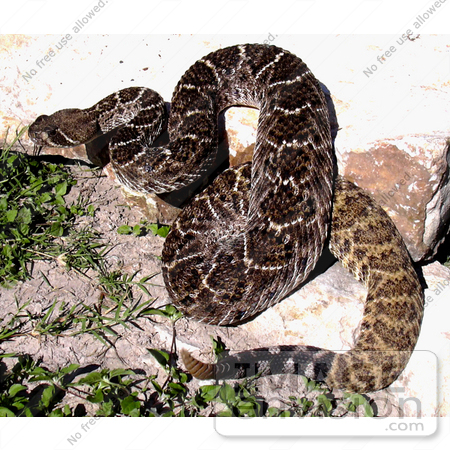

|
Picture of a “western diamondback” rattlesnake, Crotalus atrox, is a well known, large, gray to rust-colored serpent that is widely distributed across the southwestern to southcentral aspect of the United States, and adjacent Mexico (Klauber, 1997; Campbell and Lamar, 2004). It’s abundant along 80% of the Texas Gulf Coast and its barrier islands, as well as the Tamaulipan region along the southern Rio Grande valley (Tennant 1998), placing it in hurricane-prone areas, which is of importance to those living in these regions, and first-responders offering aid to those affected by such a disaster. The average adult size varies considerably across its range. In Starr, Willacy and Hidalgo counties in South Texas, C. atrox commonly grow over 5ft. in length, (Tennant, 1998), and is a highly-excitable, aggressive rattlesnake, responsible for a significant portion of the venomous snake bites, and most of the snakebite fatalities reported in the U. S. each year (Russell, 1980; Gold, 2002). The dorsolateral aspect of the body typically bears a series of dark rhomb-shaped markings that are highlighted by concentric rows of sharply contrasting dark and light cream to white colored scales. The dorsal pattern is most prominent on the anterior half of the body, fading to a series of less conspicuous crossbands on the caudal aspect to the level of the tail. The tail of this species is prominently marked with a series of black and white rings of roughly equivalent width, a feature which earns this snake the local name, “coon tailed rattlesnake” (Connant 1975). The head of this species bears a dark gray mask bordered by prominent white lines that runs diagonally across the cheeks, often obscuring the eyes. Unlike any other rattlesnake in its range, the caudal white lines of the mask run down to, rather than behind the corners of the mouth on each side of the head (Tennant, 1997). This image was provided by the Centers for Disease Control and Prevention/Edward J. Wozniak D.V.M., Ph.D/Michael Smith. [0003-0702-0313-1126] by 0003
|
Keywords
adobe snake, animal, animals, cdc, crotalus atrox, rattlesnake, rattlesnakes, reptile, reptiles, serpent, serpentes, snake, snakes, venomous rattlesnake species, venomous snake, western diamond-backed rattlesnake, western diamondback rattlesnake
|
|








